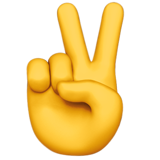2D drawing techniques: from pencil to digital art
Drawing in 2D is a multifaceted art that encompasses a variety of techniques and styles. It allows artists to express their ideas and emotions by creating visual images that can be both realistic and abstract. With the advancement of technology, traditional drawing techniques have been supplemented with new approaches that have made the creation of art more accessible and diverse. Let's discuss the basic drawing techniques, ranging from classic pencils to modern digital tools.

Pencil drawing
Pencil drawing is a basic technique that many aspiring artists become familiar with. It involves the use of graphite pencils of varying degrees of hardness to achieve a variety of effects.
One of the main advantages of the pencil is that it can be easily corrected. Mistakes can be easily erased or darkened, making the process more flexible. Pencil drawing also serves as a basis for composition and developing ideas before moving on to more complex techniques.
One of the main advantages of the pencil is that it can be easily corrected. Mistakes can be easily erased or darkened, making the process more flexible. Pencil drawing also serves as a basis for composition and developing ideas before moving on to more complex techniques.
Watercolor
Watercolor is a painting technique that uses transparent water-soluble paints. Watercolor paintings are characterized by delicate colors and soft transitions, which makes them especially attractive for creating landscapes and still lifes.
Working with watercolor requires a special approach and understanding of the interaction of water and paint. Artists often work on special paper that allows the colors to flow smoothly, creating unique effects. This technique develops a sense of composition and color.
Working with watercolor requires a special approach and understanding of the interaction of water and paint. Artists often work on special paper that allows the colors to flow smoothly, creating unique effects. This technique develops a sense of composition and color.

Oil painting
Oil painting is a more complex technique that requires skill and patience. Oil paints are made with an oil base and can be mixed to achieve the desired shades and textures. This technique is known for its rich palette and depth of color.
Oil painting allows for chiaroscuro effects and detailed images. However, it takes longer to dry, allowing the artist to make changes to the painting over time. Many famous artists, such as Van Gogh and Rembrandt, created their masterpieces using this technique.
Oil painting allows for chiaroscuro effects and detailed images. However, it takes longer to dry, allowing the artist to make changes to the painting over time. Many famous artists, such as Van Gogh and Rembrandt, created their masterpieces using this technique.

Experimental techniques
With the development of art, new experimental painting techniques have emerged and are actively used by contemporary artists. This can be the use of different materials such as acrylics, pastels or even unconventional objects such as sponges, branches or textiles.
Experimental techniques allow artists to go beyond traditional drawing and create unique works of art that reflect a personal style and a fresh perspective on the world around them.
Experimental techniques allow artists to go beyond traditional drawing and create unique works of art that reflect a personal style and a fresh perspective on the world around them.

Digital art
The advent of digital technology has created new horizons for artists. Digital art allows you to create works directly on your computer screen using graphics tablets and specialized software such as Adobe Photoshop or Corel Painter.
One of the benefits of digital art is the ability to easily edit and change elements of the work. Artists can experiment with colors, textures, and shapes, which greatly expands their creativity. In addition, digital art makes it easy to share work online and distribute it to a wide audience.
The variety of 2D drawing techniques opens up many opportunities for self-expression and creativity. From traditional approaches such as pencil and oil painting to modern digital techniques, each technique has its own unique features and benefits. It's important to remember that the key to success is practice and experimentation. Artists can combine different techniques and find their own style that will reflect their personality and vision of the world.
Regardless of the technique chosen, the most important thing is the desire to create and enjoy the process of drawing. Art has no boundaries, and every artist can find his or her way in this boundless world of creativity.
One of the benefits of digital art is the ability to easily edit and change elements of the work. Artists can experiment with colors, textures, and shapes, which greatly expands their creativity. In addition, digital art makes it easy to share work online and distribute it to a wide audience.
The variety of 2D drawing techniques opens up many opportunities for self-expression and creativity. From traditional approaches such as pencil and oil painting to modern digital techniques, each technique has its own unique features and benefits. It's important to remember that the key to success is practice and experimentation. Artists can combine different techniques and find their own style that will reflect their personality and vision of the world.
Regardless of the technique chosen, the most important thing is the desire to create and enjoy the process of drawing. Art has no boundaries, and every artist can find his or her way in this boundless world of creativity.


2D Artist
An online course from a working studio with a unique payplan that we put into action every day with real customers!

Made with love by Redby Art.

Join our social networks to follow the latest company news
© All Rights Reserved. redbyschool@mail.ru


